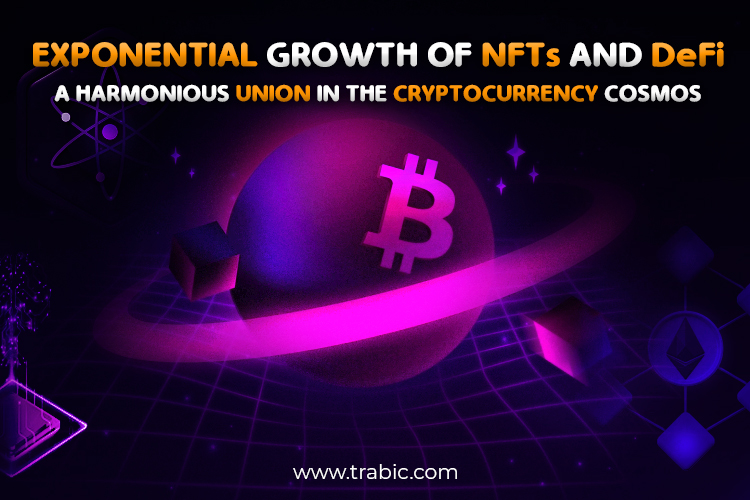In recent years, the exponential growth of NFTs and DeFi (Decentralized Finance) has been a significant trend in the blockchain and cryptocurrency space. NFTs (Non-Fungible Tokens) are unique digital assets stored on a blockchain and can represent ownership of various items such as artwork, music, videos, and even virtual real estate. The popularity of NFTs surged in 2021, with high-profile sales fetching millions of dollars.
NFTs have attracted the attention of artists, musicians, and collectors, who see them as a new way to monetize their digital creations and provide proof of ownership. On the other hand, DeFi refers to a set of financial applications built on top of blockchain networks, primarily Ethereum, that aims to create a more open, transparent, and accessible financial system. DeFi allows users to participate in financial activities such as lending, borrowing, and trading without intermediaries such as banks or other financial institutions.
The promise of lower fees, increased accessibility, and the potential for higher returns have driven the explosive growth of DeFi in 2020 and 2021. NFTs and DeFi have seen significant growth due to their decentralized nature, which removes the need for intermediaries, and their ability to leverage blockchain technology to create new forms of value and financial applications. The increasing interest and adoption of blockchain and cryptocurrency technologies among mainstream users and investors have also fueled NFTs and DeFi.
However, it is vital to note that the exponential growth of NFTs and DeFi has also led to concerns about the environmental impact of their underlying blockchain networks and the potential risks associated with unregulated financial applications. Consequently, measures have been taken to develop more sustainable and energy-efficient blockchain solutions and regulate the emerging DeFi ecosystem.
How Do NFTs Store Value?
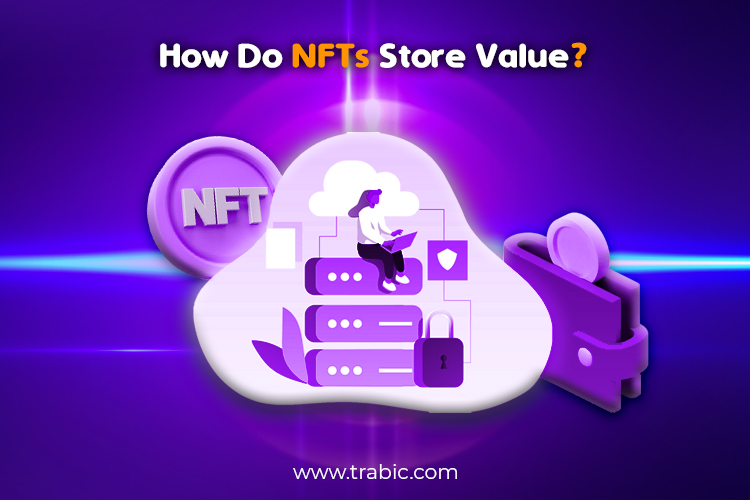
NFTs (Non-Fungible Tokens) store value by creating a unique digital asset on the blockchain. They are digital certificates of ownership for a specific asset, such as digital art, music, or collectibles. Blockchain technology generates a tamper-proof and permanent record of ownership and authenticity, ensuring that the NFTs are scarce and valuable. The value of NFTs is determined by market demand, just like any other asset. If there is high demand for a particular NFT, its value can increase significantly.
This can be driven by factors such as the asset’s rarity, the creator’s reputation, and the platform’s popularity where the NFT is sold. NFTs are typically bought and sold using cryptocurrency, such as Ethereum. The price of the NFT is usually denominated in cryptocurrency, and the transaction is recorded on the blockchain, ensuring transparency and security.
Non-fungible tokens (NFTs) have become increasingly popular due to their ability to represent unique, valuable, and verifiable digital assets. NFTs are digital certificates of ownership representing everything from artwork to collectibles and even tweets. But how do NFTs store value?
The answer lies in the unique characteristics of NFTs. Unlike fungible tokens such as Bitcoin, which are interchangeable and can be used for multiple purposes, NFTs are unique and represent a specific asset. This makes them a perfect fit for digital art, collectibles, and other unique digital assets that have value beyond their underlying code.
One way NFTs store value is by providing a verifiable and immutable record of ownership. Each NFT contains a unique digital signature that cannot be replicated or altered. This signature is stored on a blockchain, which acts as a distributed ledger that records all transactions related to the NFT. This means that the ownership of an NFT can be easily traced and verified, providing a secure and reliable way to store and transfer value.
Another way NFTs store value is by creating scarcity in the digital world. Unlike traditional physical assets, which are limited by their physical nature, digital assets can be duplicated and distributed infinitely. However, NFTs create scarcity by representing a unique, one-of-a-kind asset. This scarcity can drive up the value of the NFT as collectors and investors seek to own a piece of digital history or a unique piece of art.
How Does DeFi Unlock Value?
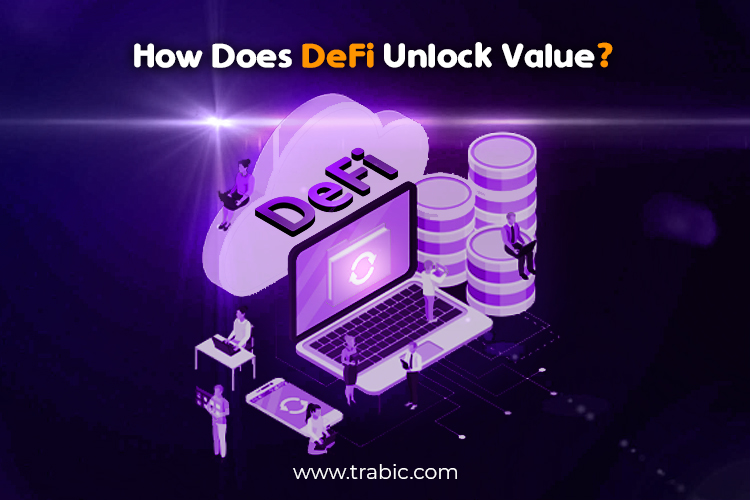
DeFi (Decentralized Finance) has been a game-changer for the financial industry. It has provided a new way to access financial services and unlocked value for individuals and businesses. DeFi is a blockchain-based financial system that operates independently of centralized intermediaries such as banks and financial institutions. It is built on a decentralized network of smart contracts that automate financial transactions and remove the need for intermediaries. The decentralized nature of DeFi ensures that it is transparent, secure, and accessible to anyone with an internet connection.
One of the ways DeFi unlocks value is by removing intermediaries and reducing costs. Traditional financial intermediaries charge high fees for their services, which can significantly burden individuals and small businesses. With DeFi, however, these fees are significantly reduced or even eliminated. Smart contracts execute transactions automatically, reducing the need for human intervention and the associated costs.
DeFi (Decentralized Finance) unlocks value by providing an open and permissionless financial infrastructure that enables anyone with an internet connection to access a wide range of financial services without intermediaries such as banks. This infrastructure is built on top of blockchain technology, which allows for transparency, security, and immutability of financial transactions.
One of the primary ways DeFi unlocks value is by offering decentralized lending and borrowing platforms. These platforms allow individuals to earn interest on their cryptocurrency holdings by lending them to other users on the platform who need them for margin trading or other purposes. In addition, borrowers can access loans without needing a credit check or collateral, providing a more inclusive financial system.
DeFi enables decentralized exchanges (DEXs) where users can trade cryptocurrencies without centralized intermediaries. This creates a more open and transparent market where anyone can participate in trading activities without needing approval from a centralized authority. Another way DeFi unlocks value is through yield farming, which involves users earning rewards for providing liquidity to DeFi protocols. These rewards can be in the form of additional cryptocurrency tokens or governance rights within the protocol.
Overall, DeFi unlocks value by providing a more open, transparent, and accessible financial infrastructure that empowers individuals to seize command of their finances and participate in the global economy without intermediaries.
The Appearance Of NFTs In The DeFi Ecosystem
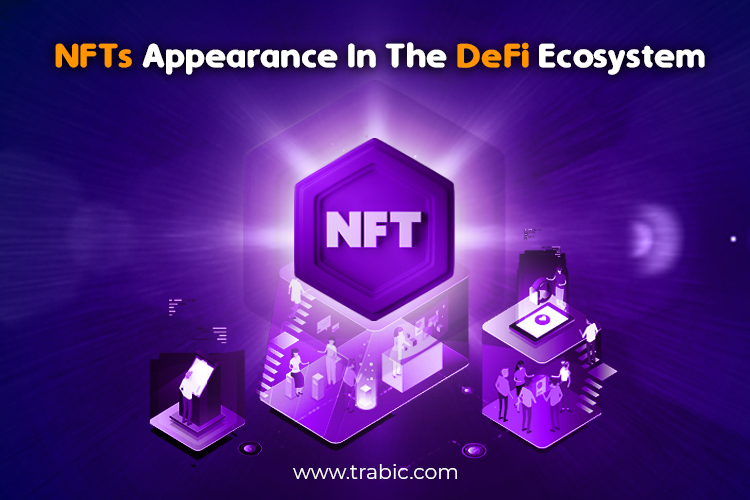
The emergence of decentralized Finance (DeFi) has revolutionized the traditional financial landscape by offering a more democratic and decentralized approach to Finance. DeFi enables anyone online to access products and financial services without intermediaries or middlemen. However, the DeFi ecosystem has evolved further with the appearance of Non-Fungible Tokens (NFTs), which have created a new dimension of value and innovation within the space.
NFTs are digital assets representing ownership or proof of authenticity of a unique item or piece of content, such as artwork, music, or collectibles. NFTs are created on blockchain technology, which provides a secure and transparent method of recording transactions and ownership. NFTs are non-interchangeable, meaning that each NFT is unique and cannot be replaced with another asset of the same value, unlike cryptocurrencies or traditional currencies, which are fungible.
The appearance of NFTs in the DeFi ecosystem has created new opportunities for creators and investors alike. NFTs provide all creators an exclusive way to monetize their digital content and intellectual property, enabling them to reach a wider audience and generate revenue from their work. On the other hand, investors can benefit from the potential appreciation in the value of NFTs, similar to how traditional collectors invest in physical art or collectibles.
The arrival of NFTs in the DeFi ecosystem has been a recent development that has opened up new possibilities for decentralized Finance. NFTs, or non-fungible tokens, are unique digital assets that are indivisible and cannot be exchanged for another asset of equal value. They have primarily been used in the art, gaming, and collectibles markets.
With the rise of DeFi, NFTs are being explored as a way to collateralize loans and provide liquidity to decentralized lending and borrowing platforms. By locking up an NFT as collateral, users can access loans and earn interest without selling their valuable assets. This also opens up new opportunities for fractional ownership, where multiple users can own a share of an NFT and benefit from its value appreciation.
Another way NFTs are used in DeFi is by creating NFT indexes, where multiple NFTs are grouped to create a diversified portfolio. This allows investors to gain exposure to various NFTs and potentially reduce risk through diversification.
In addition, NFT marketplaces are emerging within the DeFi ecosystem, where users can buy and sell NFTs in a decentralized manner without the need for intermediaries or centralized crypto platforms. This allows for greater transparency, security, and lower fees.
Overall, the arrival of NFTs in the DeFi ecosystem creates new opportunities for value creation and financial innovation while challenging traditional notions of asset ownership and value.
Merging NFTs With DeFi
Non-fungible tokens (NFTs) have emerged as a compelling use case for blockchain technology in decentralized Finance (DeFi). NFTs are unique digital assets verified on a blockchain and cannot be replicated or replaced by another identical asset. This property of NFTs makes them ideal for DeFi applications, as they can represent a wide range of assets and services, including collectibles, artwork, music, real estate, and more. One of the key ways in which NFTs are being used in DeFi is through lending and borrowing platforms.
NFTs can be utilized as collateral for loans, which allows holders to unlock liquidity from their assets without selling them. This is particularly useful for owners of illiquid assets, such as artwork or collectibles, who may need short-term financing for various reasons. By using NFTs as collateral, owners can access funds while retaining ownership of their assets. In addition to lending and borrowing, NFTs are also used in DeFi through prediction markets and insurance products.
Prediction markets permit users to bet on the result of future events, and NFTs can represent the outcome of these bets. Insurance products like smart contract insurance can use NFTs to represent insurance policies and claims. This allows for greater transparency and efficiency in the insurance process.
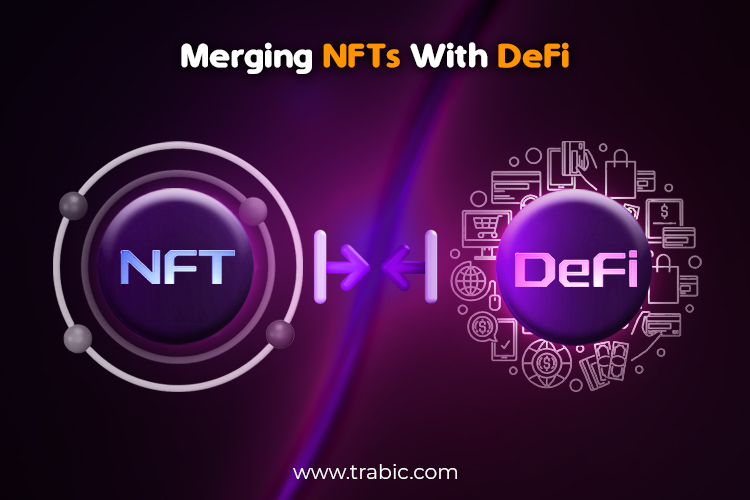
NFTs can also be used in DeFi through tokenization, where real-world assets are represented on the blockchain through NFTs. This can allow for fractional ownership and trading of assets that would otherwise be difficult to divide and transfer. For example, real estate properties can be tokenized into NFTs, allowing for partial ownership and more effortless transfer of ownership.
NFTs offer a new and exciting way to bring real-world assets into decentralized Finance. They offer greater liquidity, flexibility, and transparency in various financial applications and are poised to play an increasingly important role in the DeFi ecosystem in the years to come.
Collateralization
Collateralization is a critical aspect of the DeFi ecosystem as it enables the creation of stablecoins and other asset-backed tokens. However, one of the challenges with collateralization is requiring a large amount of capital to be locked up as collateral, limiting the number of users who can participate in the DeFi space. NFTs can help to address this problem by providing an alternative form of collateral.
NFTs can be used as collateral in the same way that other assets are used. Instead of locking up a large amount of capital, users can lock up NFTs representing various assets, such as artwork, collectibles, or even real estate. By using NFTs as collateral, users can unlock the value of their assets without having to sell them. For example, a user could lock up an NFT representing a piece of artwork, which is then used as collateral to mint a stablecoin.
The user can then use the stablecoin to access other DeFi applications, such as lending or trading. Once the user pays back the stablecoin, the NFT is returned, and the user can continue to hold or trade the NFT as desired. Using NFTs as collateral can also provide additional benefits beyond unlocking value. NFTs can be more easily transferable and divisible than traditional assets, making them more flexible and accessible to a broader range of users.
Additionally, NFTs can provide a more transparent and auditable form of collateral, as their ownership and value are recorded on the blockchain. Overall, using NFTs as collateral in the DeFi ecosystem can help to unlock value and increase accessibility for users. As the use cases for NFTs resume to develop, we will likely see more innovation in the DeFi space leveraging the unique properties of NFTs.
Concerns Regarding The Curve Model
The Curve Model in DeFi is a mathematical formula used to determine an asset’s value in a liquidity pool. However, there are some concerns with the Curve Model, such as the potential for impermanent loss and the need for constant rebalancing. NFTs can help address these concerns by providing a more stable form of collateral and reducing the need for frequent rebalancing.
One way NFTs can address the concerns of the Curve Model is by providing a more stable form of collateral for liquidity pools. Instead of relying on volatile cryptocurrencies as collateral, NFTs can be used to secure the pool’s value. For example, a liquidity pool backed by a collection of rare art NFTs would have a more stable value than a pool backed by a volatile cryptocurrency like Bitcoin. This can reduce impermanent loss risk and provide liquidity providers with a more stable return.
NFTs can reduce the need for frequent rebalancing in liquidity pools. Rebalancing is the process of adjusting the weights of the assets in the pool to maintain a stable value. However, this process can be time-consuming and costly. By using NFTs as collateral, the pool can be rebalanced less frequently since the value of the NFTs is more stable. This can reduce transaction fees and increase the efficiency of the pool. Overall, using NFTs in Decentralized Finance can help address the concerns of the Curve Model and provide a more stable and efficient liquidity pool for users.
NFT Ownership And Its Impact On Decentralized Finance
FT ownership can significantly impact DeFi (Decentralized Finance) by providing a new type of collateral for loans and other financial instruments. NFTs, being unique and non-interchangeable, can serve as a valuable form of collateral that can be used to secure loans and other financial products. NFTs can impact DeFi by enabling users to borrow against their NFT holdings. This allows users to maintain ownership of their NFTs while using them to secure loans or other forms of credit.
NFTs can also be used to create synthetic assets, which can be used to gain exposure to a particular asset or market without actually owning it. Another impact that NFT ownership can have on DeFi is in the area of governance.
With NFTs, ownership can represent a certain level of voting power, allowing users to have a say in the direction of a distinctive NFT project or platform. This can be particularly important in decentralized autonomous organizations (DAOs), where ownership and voting rights are closely tied together. However, there are also probable hazards associated with using NFTs as collateral in DeFi. One concern is the liquidity of NFTs, as they may be more challenging to sell or trade than other types of assets.
Additionally, the value of NFTs can be highly subjective and dependent on market sentiment, making them more volatile and complex to value. The use of NFTs in DeFi has the potential to bring new forms of value and ownership to the space, but it also poses new challenges and risks that must be carefully considered and managed.
